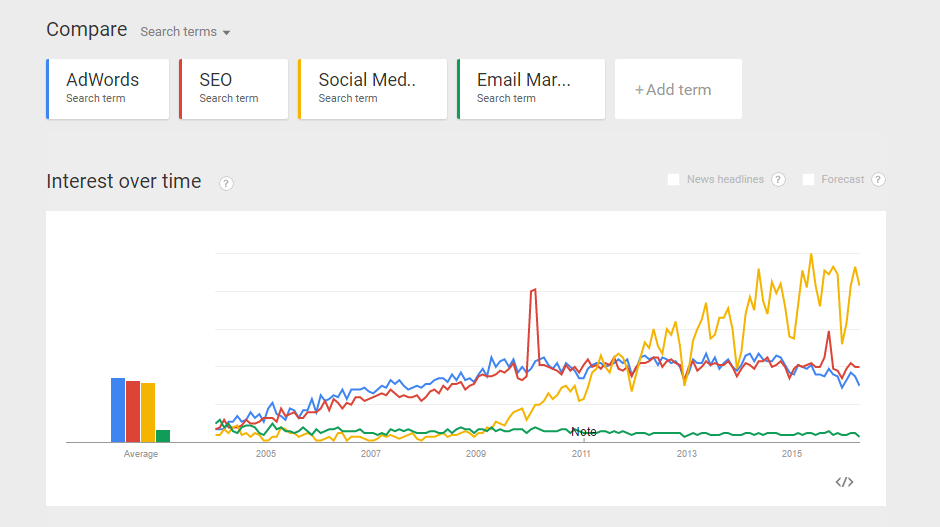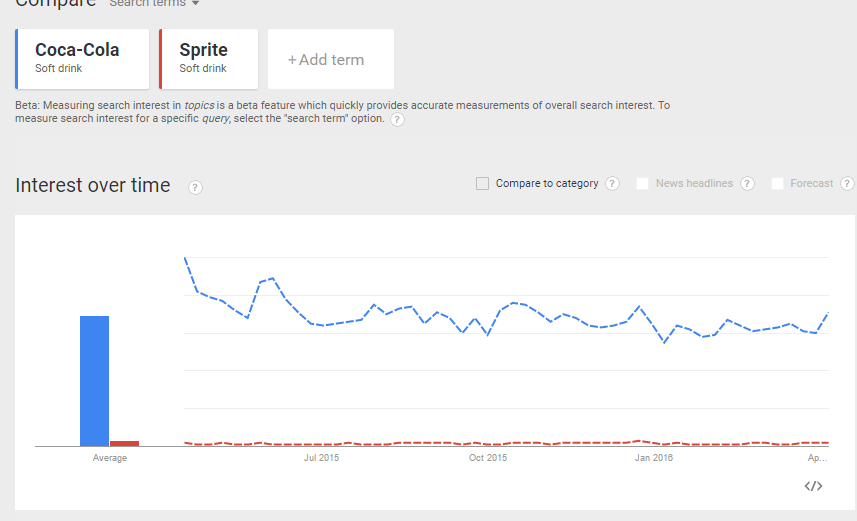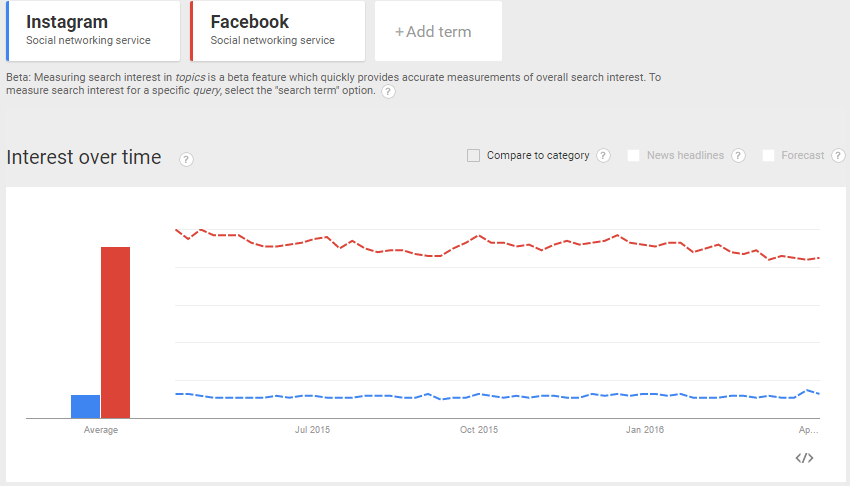[caption id="attachment_6240" align="aligncenter" width="800"] Web analytics concept - Multicolor version[/caption] Google Trends is a goldmine of data that tells us all kinds of interesting things about local consumer behaviour. For digital marketing professionals and business owners alike, Google Trends is a powerful tool for gauging how perceptions of an industry, product or brand have changed over time, and what’s popular right now. Google Trends are derived from Google’s search data (which is pretty extensive!) and it can provide us with a wealth of information that we can apply to our digital marketing efforts. Google Trends is fairly easy to use. At the top of the page you can enter your search term or topic in the query box, and then further refine your search according to the following parameters:
Web analytics concept - Multicolor version[/caption] Google Trends is a goldmine of data that tells us all kinds of interesting things about local consumer behaviour. For digital marketing professionals and business owners alike, Google Trends is a powerful tool for gauging how perceptions of an industry, product or brand have changed over time, and what’s popular right now. Google Trends are derived from Google’s search data (which is pretty extensive!) and it can provide us with a wealth of information that we can apply to our digital marketing efforts. Google Trends is fairly easy to use. At the top of the page you can enter your search term or topic in the query box, and then further refine your search according to the following parameters:
- Region: Refine your search query to worldwide, country, state or even city
- Time Frame: Google Trends lets you look as far back as 2004, which is particularly useful if you’re looking at internet and social media trends. You can also search for trends within the last seven days, one year, one month, right down to the past hour
- Categories: Limit your search to specific categories such as Arts & Entertainment, Online Communities, Internet & Telecom, Beauty & Fitness, People & Society (and much, much more)
- Engines: Choose between Web Search, News Search, Image Search, YouTube Search and Google Shopping
The results are then generated into two separate graphs: interest over time and regional interest. One of the most useful features of Google Trends is that you can export the raw data for each location and date into a CSV file, which means you can share it with colleagues and use it in reports and proposals. (To do this, click the ‘Settings’ button in the top right-hand corner, and then click ‘Download as CSV’). To illustrate, I’ve entered in the search terms of AdWords, SEO, Social Media and Email Marketing to gauge their interest in Australia between 2004 and the present. This is my result:  The graph shows me that social media has fast taken over email marketing in terms of popularity, and that it’s still experiencing a significant surge. I can also quickly tell that SEO, AdWords and social media are far more popular than email marketing overall.
The graph shows me that social media has fast taken over email marketing in terms of popularity, and that it’s still experiencing a significant surge. I can also quickly tell that SEO, AdWords and social media are far more popular than email marketing overall.
Use Google Trends to gauge what’s popular
To help you stay ahead of the competition, you can use Google Trends to forecast the popularity of products, services or brands. For example, I entered ‘Coca-Cola’ and ‘Sprite’ and set the time frame to the past 12 months to gauge their interest in Australia.  If I was a store owner, I’d use this graph to give me a clear picture of which brand I’d be better off stocking in my store. You can do the same for social media platforms such as Instagram and Facebook to help you determine which platform is likely to perform better in the future.
If I was a store owner, I’d use this graph to give me a clear picture of which brand I’d be better off stocking in my store. You can do the same for social media platforms such as Instagram and Facebook to help you determine which platform is likely to perform better in the future.  It’s important to remember that you won’t see absolute numbers when using Google Trends. Rather, Google Trends shows the relevance of your search queries compared to one another. Data points have a value of between 0-99, and the most relevant region, most important search query and highest point on the graphic have a value of 100. Google Trends is one of the most powerful tools that can help us determine what our audience is interested in, and what they will be interested in. This is just an introduction to what Google Trends can do, but play around with it and you’ll soon discover the many ways you can interpret its data-driven insights.
It’s important to remember that you won’t see absolute numbers when using Google Trends. Rather, Google Trends shows the relevance of your search queries compared to one another. Data points have a value of between 0-99, and the most relevant region, most important search query and highest point on the graphic have a value of 100. Google Trends is one of the most powerful tools that can help us determine what our audience is interested in, and what they will be interested in. This is just an introduction to what Google Trends can do, but play around with it and you’ll soon discover the many ways you can interpret its data-driven insights.



